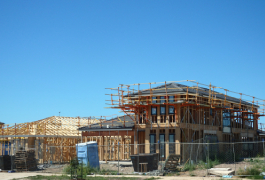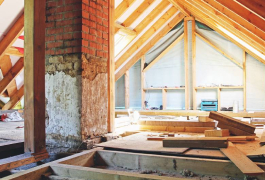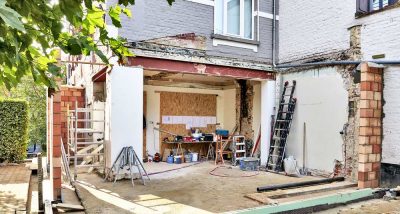- Oneflare /
- Cost Guides /
- Building A House

How much does it cost to build a new house in 2024?
$620 to $4,000 per m2
What's on this page
- How much does building a house cost?
- Reasons for building your own home
- Factors impacting the cost of building a home
- Site costs influencing total cost
- Price estimate for a three-bedroom home
- Price estimates for a four-bedroom home
- Cost-saving tips when building a new home
- How to hire a builder
- How to save money hiring a builder
Related articles
How much does building a house cost?
Designing and building your ideal living space requires significant investment. The construction cost can range anywhere from $1,000 to $4,000 per square metre. Factors that influence the average building cost per square metre in Australia include the size and complexity of the project, as well as the location, labour, and material costs.
With these variables influencing total costs, the answer to the question, “How much does it cost to build a house?” will always vary from person to person.
For many people, the rewards of owning a new home that’s built to their exact specifications outweigh the added costs.
Average building labour costs in Australia
One of the main factors that will affec home construction costs is the cost of labour. Remember that apart from general labour, you will also need the services of other professionals, such as architects, plumbers, electricians, and other specialists needed to build a house. These services are typically more expensive than general labour.
This table will give you a general idea of how location affects the average price to build a house in Australia:
| State | Average labourer cost per hour |
| NSW | $45 – $60 |
| VIC | $35 – $50 |
| WA | $30 – $45 |
| SA | $35 – $50 |
| QLD | $35 – $55 |
Reasons for building your own home
You want customisation & personalisation
Customisation is the main reason why many people choose to build their own homes. You can choose the floor plan, materials, features, and desired amenities. You can create a house to meet your current lifestyle, future plans, and interests. When you choose to build your own home, your options are only limited by your imagination (and budget).
You already own land
Perhaps you have already purchased land or have inherited it. If you have raw land, then it can be more cost-effective to build your own home since the lot already belongs to you. Of course, building one or several properties on your land will also skyrocket its value. If your plan is to re-sell your land, investing in residential projects like building a single home or duplex can be a long-term strategy to raise the final price.
You love the location and view
Australia has plenty of gorgeous vistas, making it the perfect location for a dream home. There are some things you simply can’t put a price on, and if waking up with the perfect morning view from your terrace is important to you, then the cost of building your own home will be well worth it.
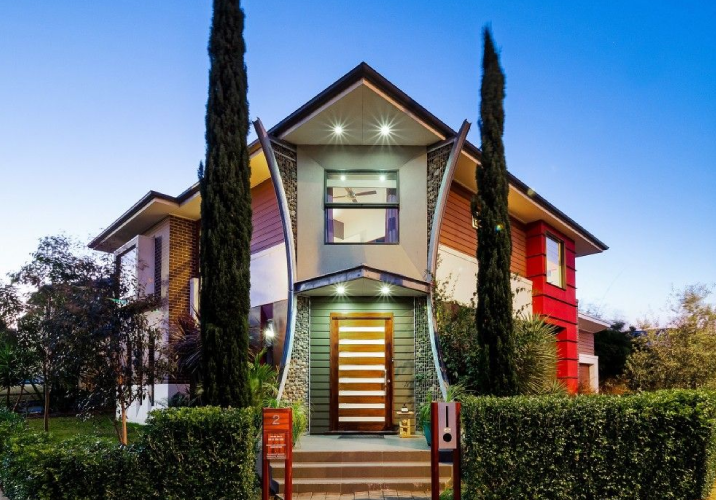
Building your own house allows you to personalise it / Source: Atelier One
Important factors that impact the cost of building a house
Excluding land and labour, the cost of building a house varies on other important factors. Here are some of the other typical expenses that will affect the final cost of the home you want to build:
Size
The size of the home you want to build will greatly affect the total expenses, including the materials, special tradies, and labour. Adding even one bathroom or extending your kitchen space will impact all of the other factors and add up to the costs.
Location
The location of new residential dwellings affects the cost of building them in several ways. First, there are differences in labour and the price of building materials across different areas. Then, there is the cost of transportation involved in getting the building materials to the site (building in a remote area means more effort to get people and materials there).
You might have more regulations and planning permits to consider when building in one area of the country compared to others.
The federal and state governments have rules limiting what you can and can’t do when building your home. For instance, in Victoria, obtaining a building permit after 7 years may have different requirements than in other states. Moreover, it’s essential to understand local zoning regulations, such as whether you can build a house on RU4 zoning, which will dictate the type of development permitted in specific areas.
Materials used
The biggest cost in building a house is materials. If you choose high-end materials, the cost will be higher than that of lower-priced options. This factor impacts everything from the shower and bath fixtures to the types of flooring. Fortunately, this is one factor that allows you to control the overall cost, assuming there are no supply chain shortages.
Stud wall dimensions are important for construction projects in Australia, but it can depend on location and construction type. The standard dimensions ensure structural integrity without adding extra costs. However, remember that requirements may differ based on location and construction type. Consult local construction industry codes to ensure compliance with regulations.
The number of contractors and specialists required
Naturally, the more contractors you hire, the more you will need to budget for their services. You will need carpenters, electricians, plumbers, and roofers at the minimum. You might also need pool installers, landscapers, and other types of specialists. If you want an architecturally designed house conceived from scratch, this will have an extra cost than if you went with a pre-made design template.
Extra amenities
Of course, adding amenities like an outdoor patio and kitchen, pergola, deck, or pool will drive up the cost. If you want these features but are tight on the initial budget, you can add them later. Still, it is best to consider them and their location when building the house from the beginning.
Site costs that impact the final cost of building a house
The building site can also affect your total bill. Here are some other considerations when constructing your property:
If you need to buy land
The cost of building a house on your own land is much less than if you need to buy the land. You will need to consider conveyancing fees or the cost of hiring a legal professional to guide you through what can often be a complex transaction.
Testing soil quality
Regardless of where you choose to build, you will have to pay for soil tests to assess the site’s suitability. Soil type can affect the requirements and building techniques that must be used.
Sloped land
Sloped land will cost more to build on than flat land because it must be graded and levelled first.
Natural disaster-prone areas
Building in an area with the potential for floods, high winds, or bushfires can drive up building costs due to the need to meet stricter building codes.
Price estimate for a three-bedroom home
The cost to build a new house is usually the main factor that people need to consider. The average size of a free-standing Australian home is around 230m2. Here are a few examples of the price range that you can expect in different categories.
Budget
If you choose cheaper materials and a small floor plan is around $120,000 at the very bottom of the scale. This does not include the cost of land.
Average
While it is possible to build a house for under 150k in Australia, the average cost to build a house of average size is around $320,000. This cost is for a 230m2 home.
Luxury
When it comes to a luxury home, the sky is the limit. For luxury homes with high-end finishes, you will pay at least around $3,500 to $4,500 per square metre.
Price estimates for a four-bedroom home
The average cost to build a four-bedroom house is usually more than the cost of building a three-bedroom house. This increased cost is mostly due to the increase in square metres involved.
Budget
A budget four-bedroom house costs about $185,000 on average.
Average
An average four-bedroom home costs around $1,500 to $3,500 per metre squared to build.
Luxury
Luxury homes cost more than average, so will start at around $3500 per square metre but can increase drastically.
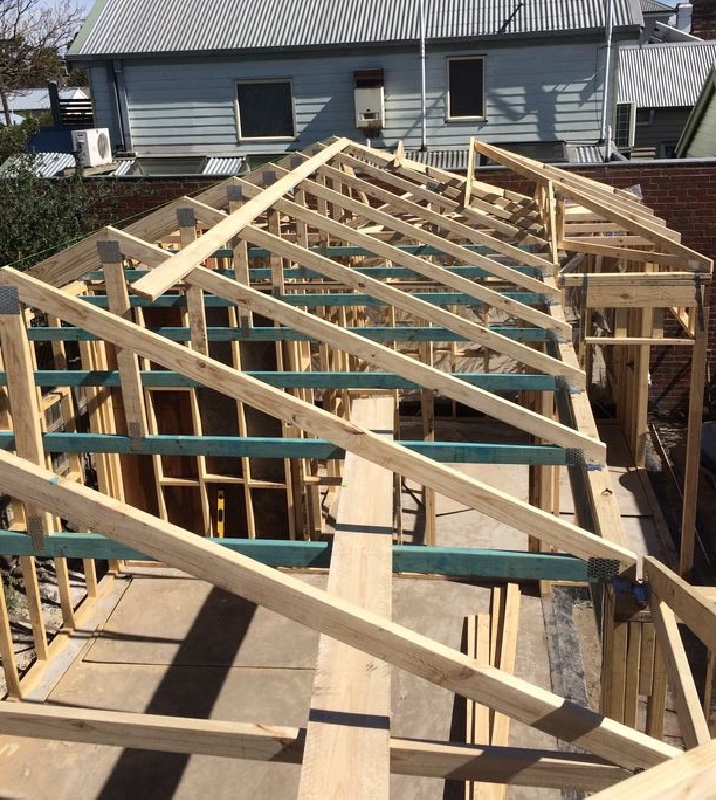
Building a new house can be disruptive to close neighbours / Source: DTA Projects
Cost-saving tips when building a house
When it comes to cost-effective home construction, the cheapest way to build a house depends on many different factors. For instance, lower building materials in one area of Australia might offset higher labour costs. Here are a few ways to offset the final costs of the home:
- Compare prices in all areas of the construction process before you hire anyone.
- Look for good deals on building materials, such as off-season sales.
- The more time you spend shopping and planning, the more you can save.
How to hire a builder
Hiring the right builder for the job is an essential part of the building process. Here are a few tips for finding and hiring the right general contractor.
How to get an accurate estimate
The more you do your research before you call a local construction business, the better assurance you have that their estimate is accurate. Here are a few ways that you can help your professional give you an accurate cost per square meter to build a house:
- Research the land and local requirements
- Have a good idea of the size and materials that you want
- Make a list of the things that you must have and a list of things that are negotiable.
Licencing and qualifications
You will be hiring many different types of contractors throughout the building process. Each of them must meet specific requirements. Rather than researching them yourself, hiring a good general contractor to do this for you might be the best way to address this issue. Here are a few tips for hiring the right contractor to oversee the completion of your project.
- Ask to see pictures and examples of completed projects.
- Read reviews and ask for references.
- Shop around and talk to them in person.
- Trust your instincts about the person when you meet them.
How to save money hiring a builder
The cheapest quote is not always the best quote. Here are a few ways to save money when you hire a builder but still get results that you are happy with, in the end:
- Compare what is included in the quote. Make sure that you are comparing similar packages.
- Ask if you will have to hire your own contractors, such as plumbers and electricians, in addition to their services.
- Ask how long it will take to complete the project and make sure that you are prepared.
Build your ideal home
Designing and building your forever home isn’t something you can DIY. It’s a massive project not for the faint of heart. That’s why it’s best to consult a professional builder for massive projects like constructing a home.
* The cost data is based on Oneflare and third-party sources
